Wildlife photography has the power to inspire others to protect wildlife and make positive changes to the environment, but unethical practices can cause harm. In this article we look at how to take photos ethically, including tips from Wildlife Photographer of the Year.
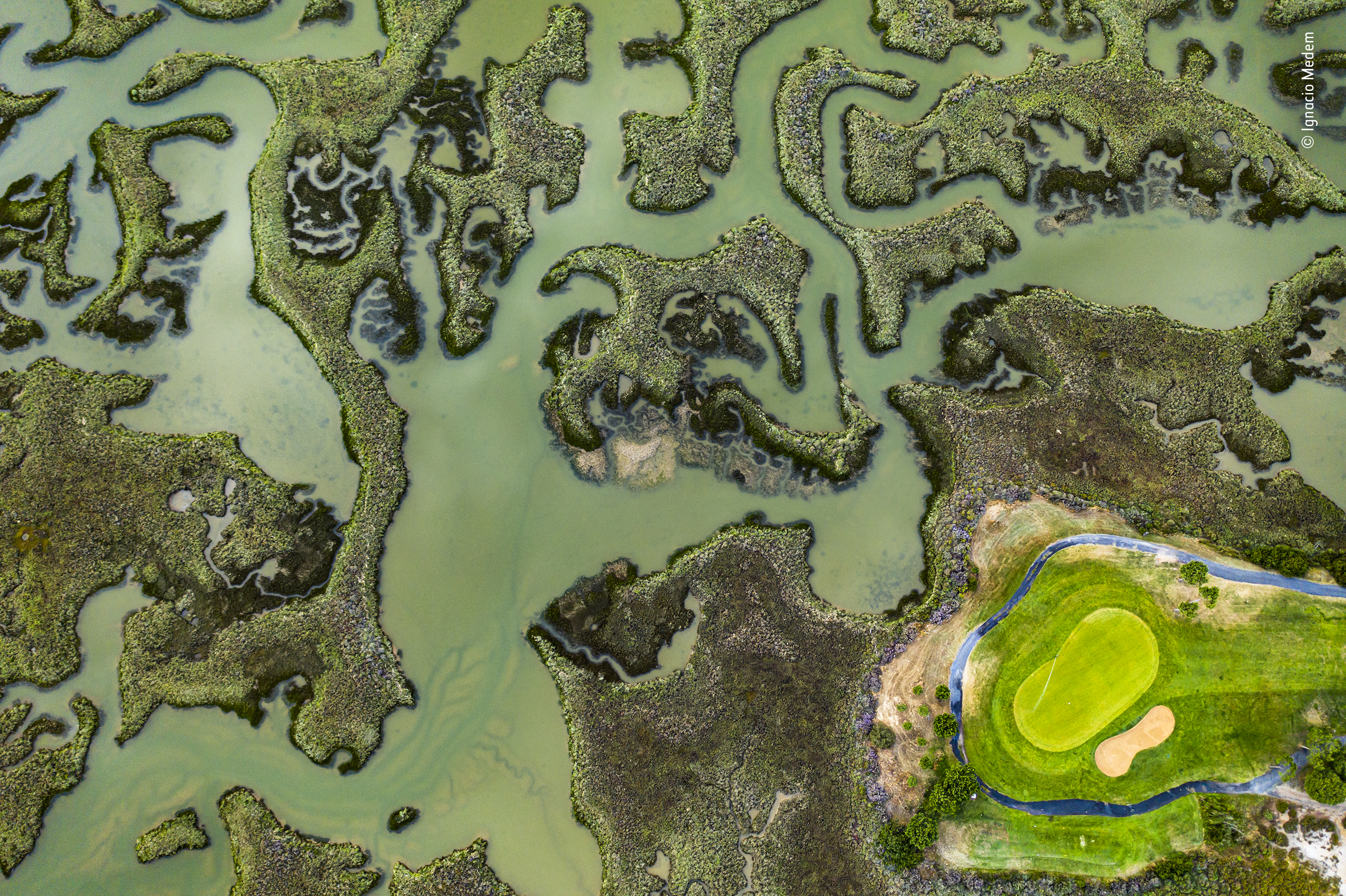
The Green Green Grass © Ignacio Medem. The Green Green Grass was Highly Commended in the Wetlands - The Bigger Picture category, Wildlife Photographer of the Year 58
Ethical use of space
Ethical travel
Wildlife photography can have significant benefits for species and ecosystems. Photographerssometimes capture rare behaviours thatbenefit scientists studying the animals or in other cases their images encourage people and governments to protect the habitats and species they photograph .
However, photographers must be mindful. In order to create their images, they often visit fragile ecosystems or work alongside vulnerable species, which can be disturbed and disrupted by the presence of people. Not only this but documenting a rare organism can cause a rush of other photographers or an influx of tourists, which then puts greater pressure on the ecosystem or species .
This has raised concerns about the danger of geo-tagging the locations of rare plants and animals as well as nesting sites. Despite often being done with good intentions, geo-tagging can have serious consequences, including attracting poachers, hunters and egg collectors. In fact, in 2020, South Africa's Kruger National Park requested that visitors do not share photos of rhinos and elephants in the area, as these alert poachers to the animal's location. Issues like this can be avoided simply by not tagging the location of where the photograph was taken when posting it online.
Leave spaces as you found them
Be respectful of spaces. When photographing an animal, take the time to study it and its environment, so that you can make sure you capture your image without disturbing it or interfering with its home . Do not alter the habitat to create a better setting, for example by pruning back branches or moving logs or rocks around. Gil Wizen, whose image Spinning the Cradle was exhibited in WPY57, stresses that when capturing his photo 'any disturbance might have caused the spider to abandon its project', so he 'took great care' not to bother it.
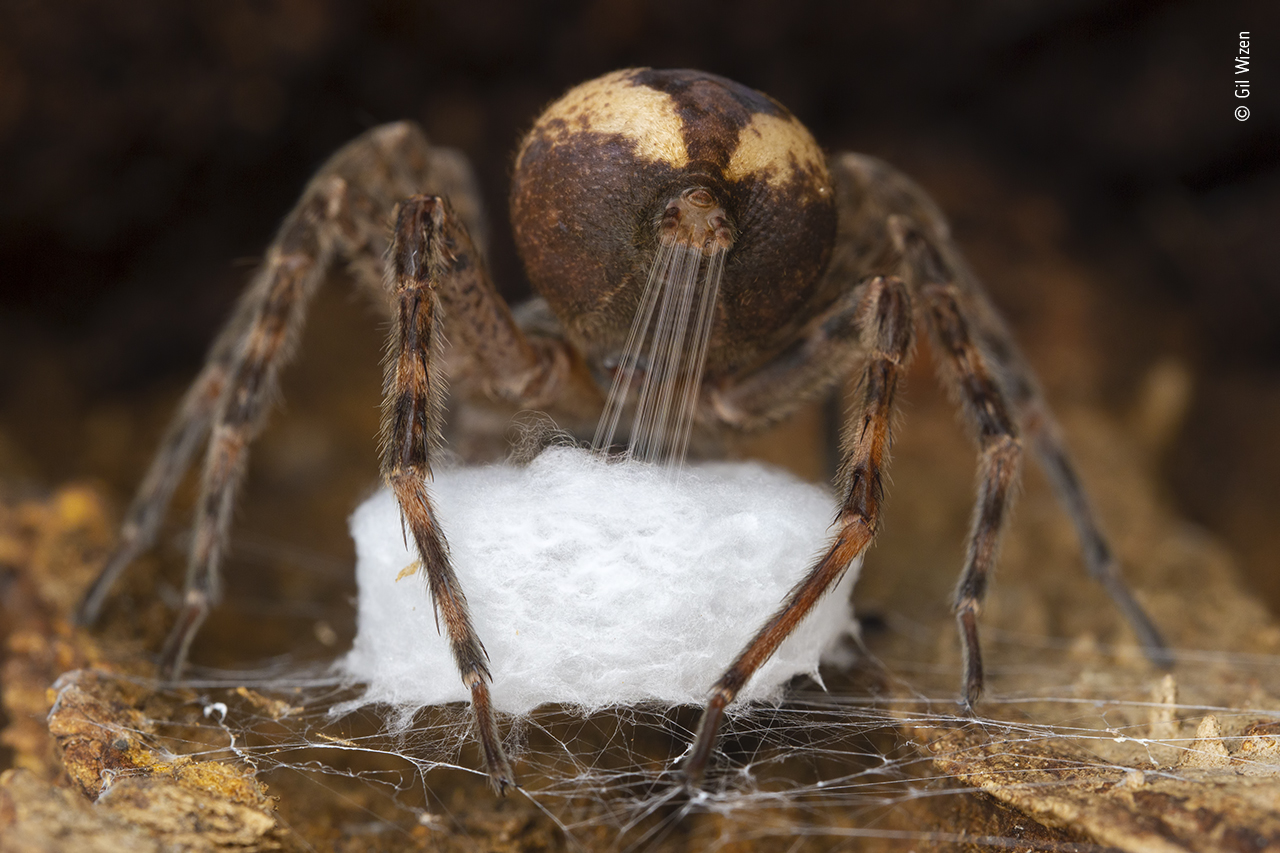
Spinning the Cradle © Gil Wizen, Wildlife Photographer of the Year 57
You should also not try to attract an animal's attention, instead leave them to go about their business. Animals can become stressed easily and getting too close may alter their natural behaviour. For example, a prey animal might abandon its kill and in doing so be forced to expend more energy to hunt again. In some cases, parents might even abandon their young or be so distracted by the photographer that they fail to detect a predator.
Ethical use of technology
Drone photography
Drones can be a great way to take aerial photos of a landscape. They open up aerial photogpahy to more people as you don’t need to hire helicopters or planes to see from above, and can offer a new viewpoint of animal behaviours. For his Highly Commended image The Green-Green Grass from WPY58 Ignacio Medem used a drone to show how the excessive construction of golf courses in Andalusia is destroying the area's marshes. This photo not only draws attention to how the habitats of many migrating birds are being lost but is also a powerful use of drone photography.

The Green Green Grass © Ignacio Medem, Wildlife Photographer of the Year 58
Another example of this is Robert Irwin's stunning photograph Bushfire, which is an excellent example of how drones can be used to safely document the impact of wildfires.
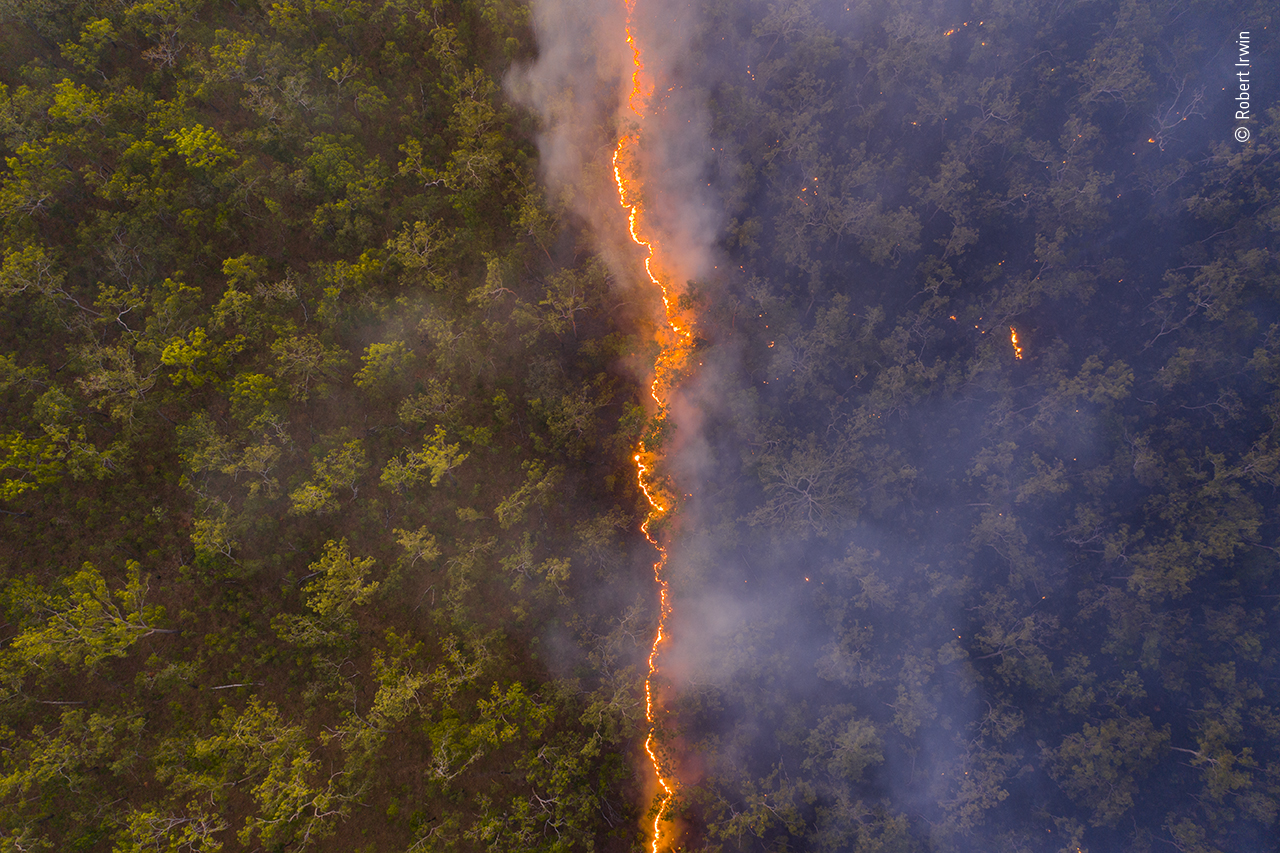
Bushfire © Robert Irwin, winner of the Wildlife Photographer of the Year 56 People's Choice Award
Terje Kolaas also used a drone to capture a fly-past of geese for his image Flying with the Geese. By positioning the drone in the air before their arrival and being able to pull it away if they got too close, he was able to get this perfectly aligned shot.
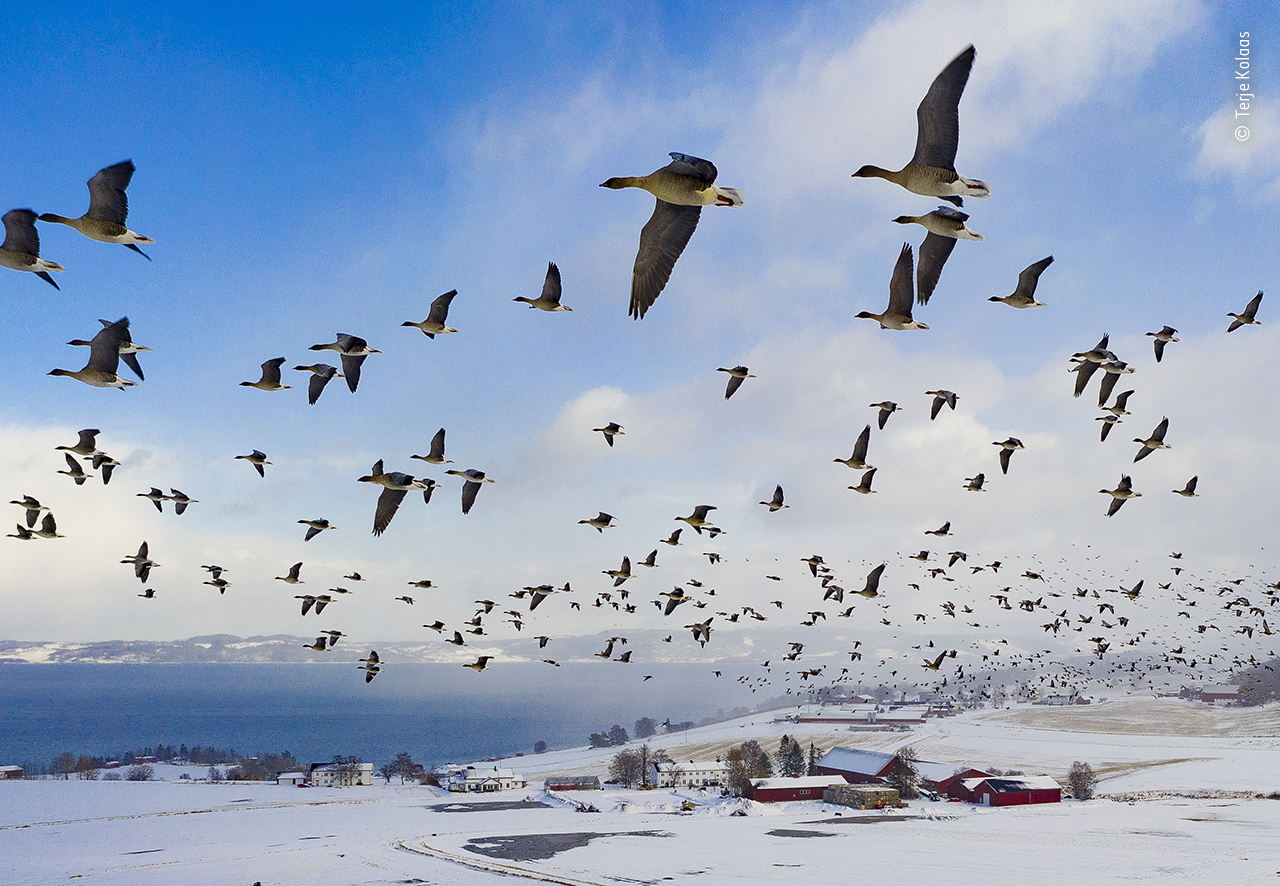
Flying with the Geese © Terje Kolaas, Wildlife Photographer of the Year 57
These images are great examples of how to correctly and safely carry out drone photography, but this is not always the case. When used incorrectly or irresponsibly, drones can be harmful to wildlife. As a result of this, their use can be controversial, with laws varying from country to country. The USA has banned the use of drones in its national parks, wilderness areas and nature preserves following an incident in 2014 when a low-flying drone caused a herd of big horn sheep to scatter, separating lambs from their mothers. Drones are also particularly disruptive to birds and shouldn't be used to capture nest pictures. If you want to use drones for photography, then check the laws in the area first and be cautious of the impact using them will have on the local wildlife, and don't get too close to your subject. Don't fly too low or noisily over an animal as their welfare must come first.
Camera traps, blinds and remote shutters
There are technologies that can help photographers to tread the line between the perfect photo and invading an animal's space.
Telephoto lenses allow photographers to take photographs at a distance, which means not only is the animal not disturbed but because of this it also continues to behave naturally. Portable blinds that camouflage the camera and photographer can be used to photograph birds without bothering them.
Remote shutters can be triggered without getting near to the subject while motion-sensitive shutters can capture wildlife behaving naturally without the photographer being present. Daniel Mideros' image Spectacled Bear's Slim Outlook was taken using a camera trap system. Spectacled bears are incredibly rare, so photographing one might not have been possible without a camera trap. By having a camera without the presence of the photographer, it is possible to photograph more elusive animals and unseen behaviour. To secure a succesful photo, the photgrapher needs to research the location, the animal behaviour, where the animal is likely to pass, and then set up the camera and flashes in the right place, at the right height.
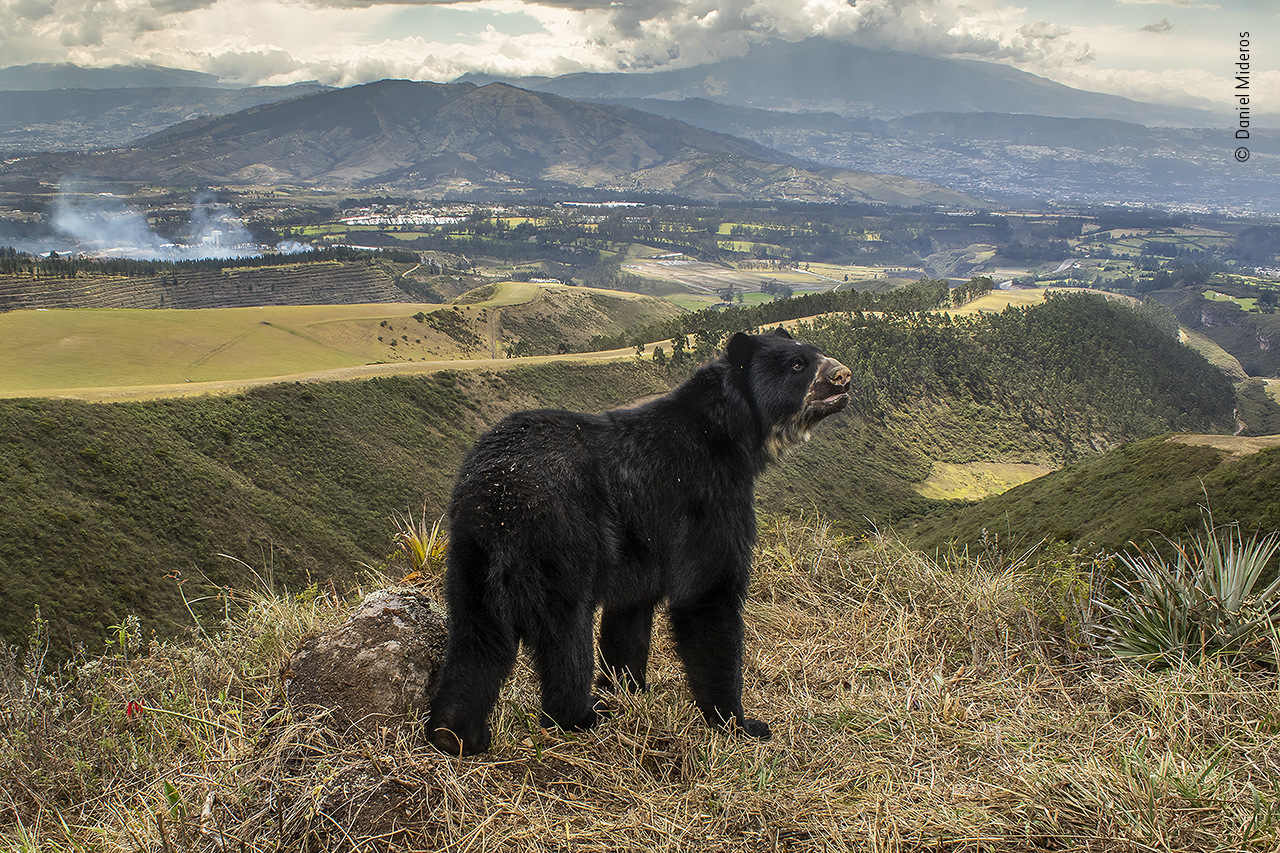
Spectacled Bear's Slim Outlook © Daniel Mideros, Wildlife Photographer of the Year 58
Winner of the WPY57 Urban Wildlife Category Alex Badyaev set up a remote camera that he could operate from inside his cabin to document these Cordilleran flycatcher chicks. He hid the camera behind a piece of bark on a nearby tree so as not to attract predators or disturb the nest.
Ethical dilemmas
Zoos
Photographers don't always photograph subjects in the wild. Sanctuaries, safari parks and zoos can provide a way for photographers to take images of non-local species without traveling overseas. However, conditions in captivity can vary, so it's important for photographers to do their research to assess whether a place is ethical or exploitive. As part of this, photographers should check for proper accreditation and that any place they visit complies with best practice. You can check the Association of Zoos and Aquariums and the Global Federation of Animal Sanctuaries for information before you visit so you can avoid visiting non-accredited zoos. Always disclose in the caption that your subject is captive. For Wildlife Photographer of the Year, images of captive animals are only accepted if drawing attention to an ethical issue.
Photojournalism
Photojournalists will sometimes deliberately seek out unethical institutions in order to record the conditions and welfare there in order to raise awareness. However, doing this presents a different set of ethical issues. Kristen Luce's series of images in WPY56 titled Show Business explores the issues surrounding animal tourism. To capture these images, Kristen chose not to reveal that she was a photojournalist until after the show. She explains, 'our method of reporting was to experience and document these wildlife encounters the same way that a tourist would. I didn't want any special treatment because I was on assignment for National Geographic. I also didn't want the operators to change anything in advance so that we weren't seeing what really happened during these encounters.'
To enter Wildlife Photographer of the Year, these types of images must be reporting on a specific issue regarding the treatment of animals by a third party, and you must make clear that the animal was captive, restrained, a model or a taxidermy animal.
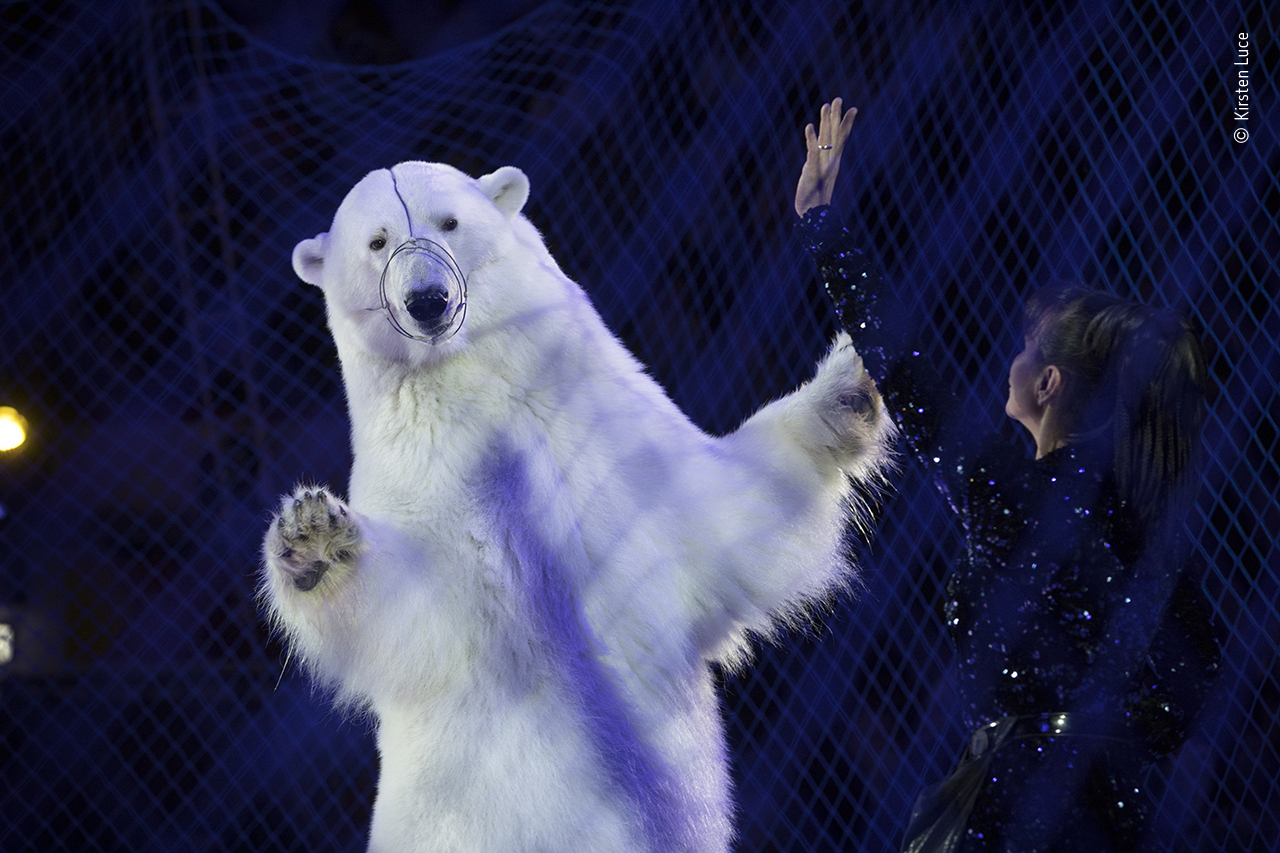
Show Business © Kristen Luce, Wildlife Photographer of the Year 56
Steve Winter's photo The Tigers Next Door also from WPY56 documents the lives of tigers in captivity across the USA. These establishments are often advertised as tiger conservation, but are really just vehicles for entertainment and profit. As Steve pointed out, 'education is so important because some people who visit think, "it's so expensive to get in here but at least we're saving tigers," no you're not! You're doing the exact opposite!’ His images illustrate the dire need for regulations to be brought in to control this activity.
Intervening to save an animal
Photographing animals in the wild can mean witnessing situations when an animal is in distress. Photographers can be confronted with the decision as to whether to intervene or to let the situation play out without intervention.
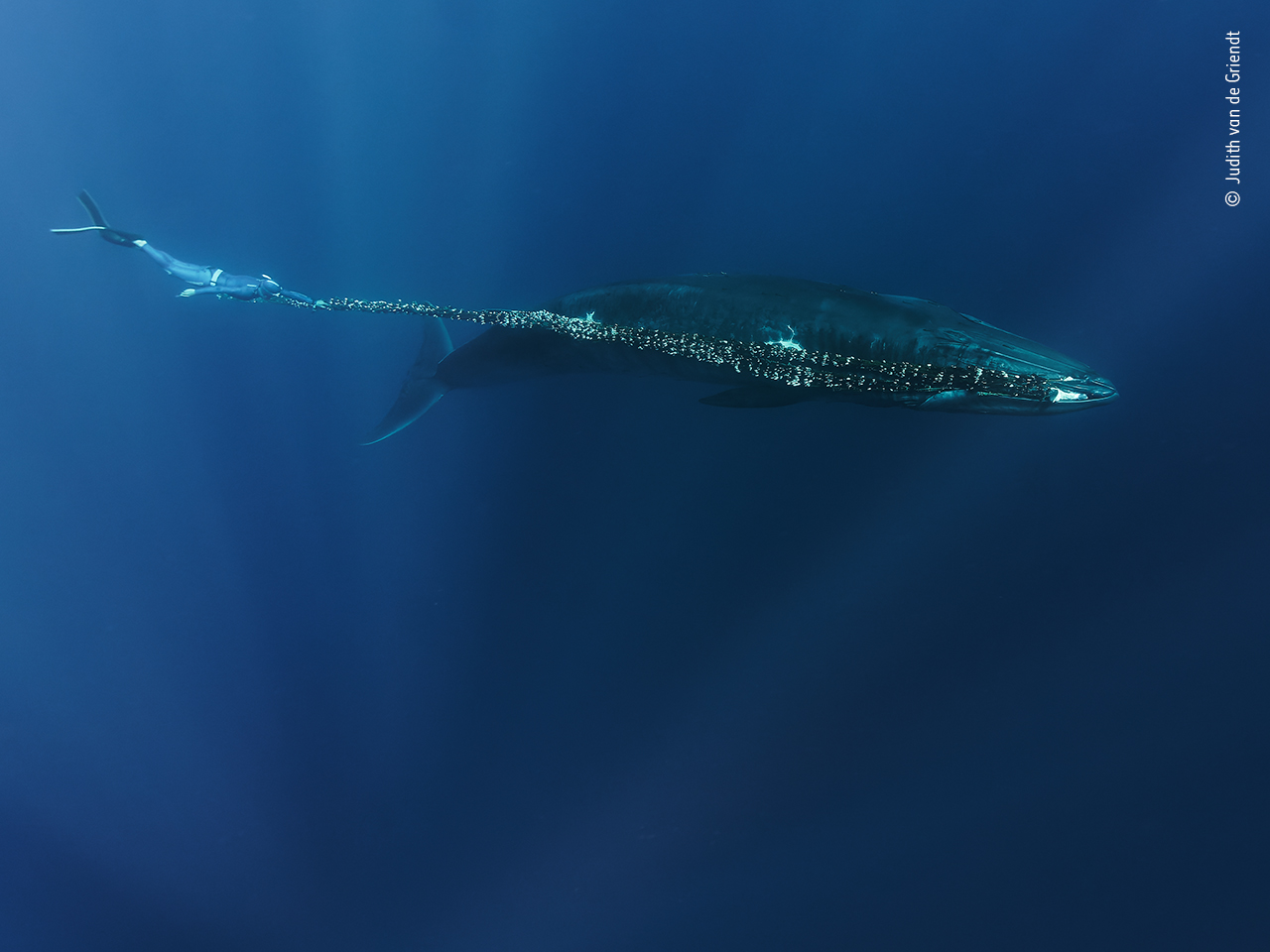
Lethal Luggage © Judith Van de Griendt, Wildlife Photographer of the Year 58
Judith Van de Griendt's photograph Dragged Down from WPY58 shows a whale caught in a fishing net. In this instance Judith chose to intervene to try to save it, but despite her best efforts she couldn't. Judith recalls 'we were able to dive down to the whale, grab the net and try to cut it with a knife. Unfortunately, the whale was still too fast to guarantee our own safety. We had to let it go after a couple of attempts to free it from this human trash.' Nets like this are a hazard to marine life, and without the net being removed, this whale likely died a slow death.
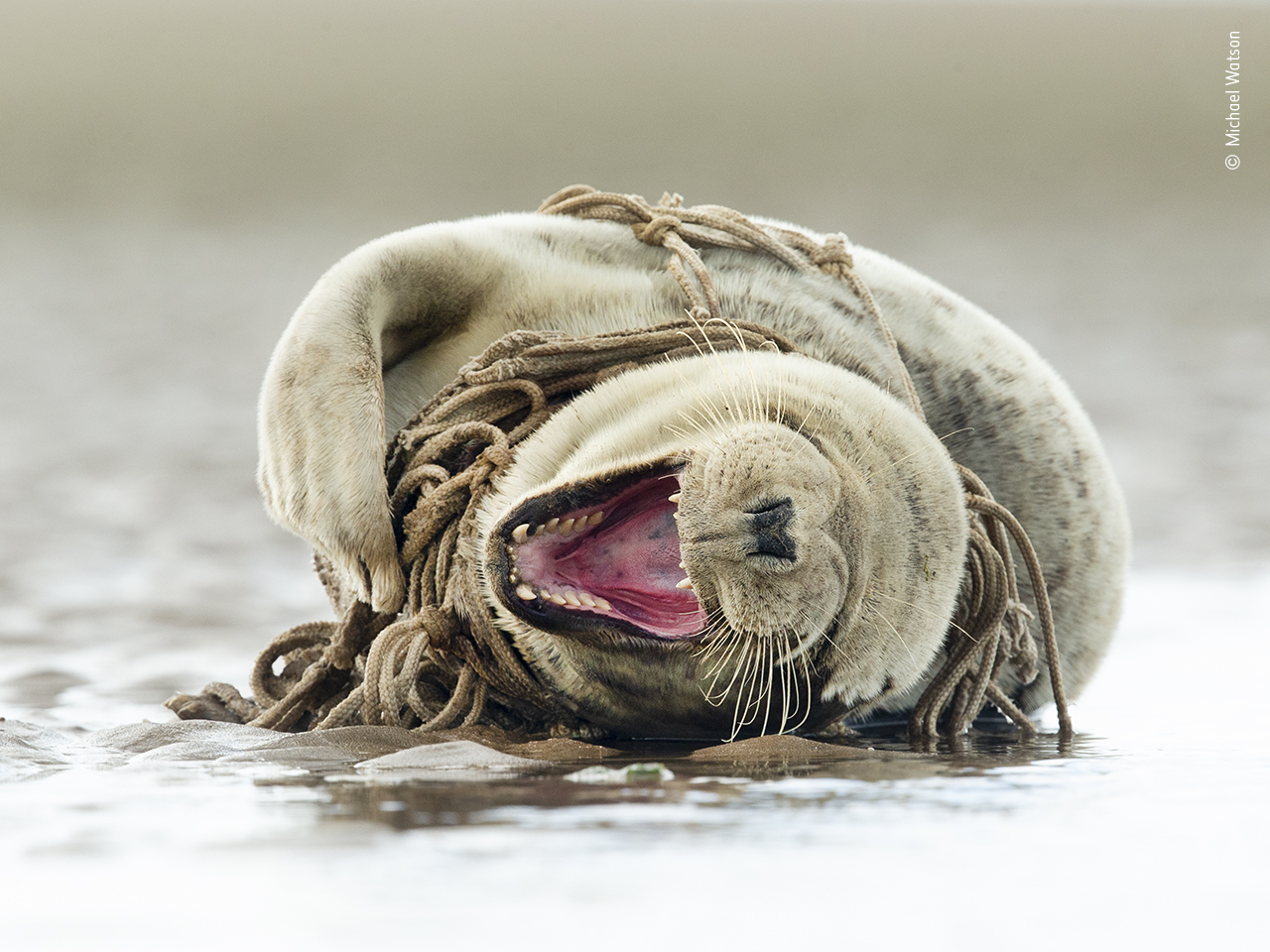
A Distressing Matter © Michael Watson, Wildlife Photographer of the Year 58
Not all attempts at intervention fail, however. The seal in Michael Watson's photograph A Distressing Matter was saved after Michael and two other photographers called the local Wildlife Trust and Seal Sanctuary, who freed it from the net and treated its wounds, before releasing it safely. If you see an animal that's wounded or in distress do not approach it, instead call the local animal rescue service immediately and try to keep it from further harm.
It's important to remember that the power we have for change can be both negative and positive. Wildlife photography can be extremely important for species conservation, ecosystem protection and scientific knowledge, but only if carried out in a way that is ethical and respectful to wild animals and spaces.
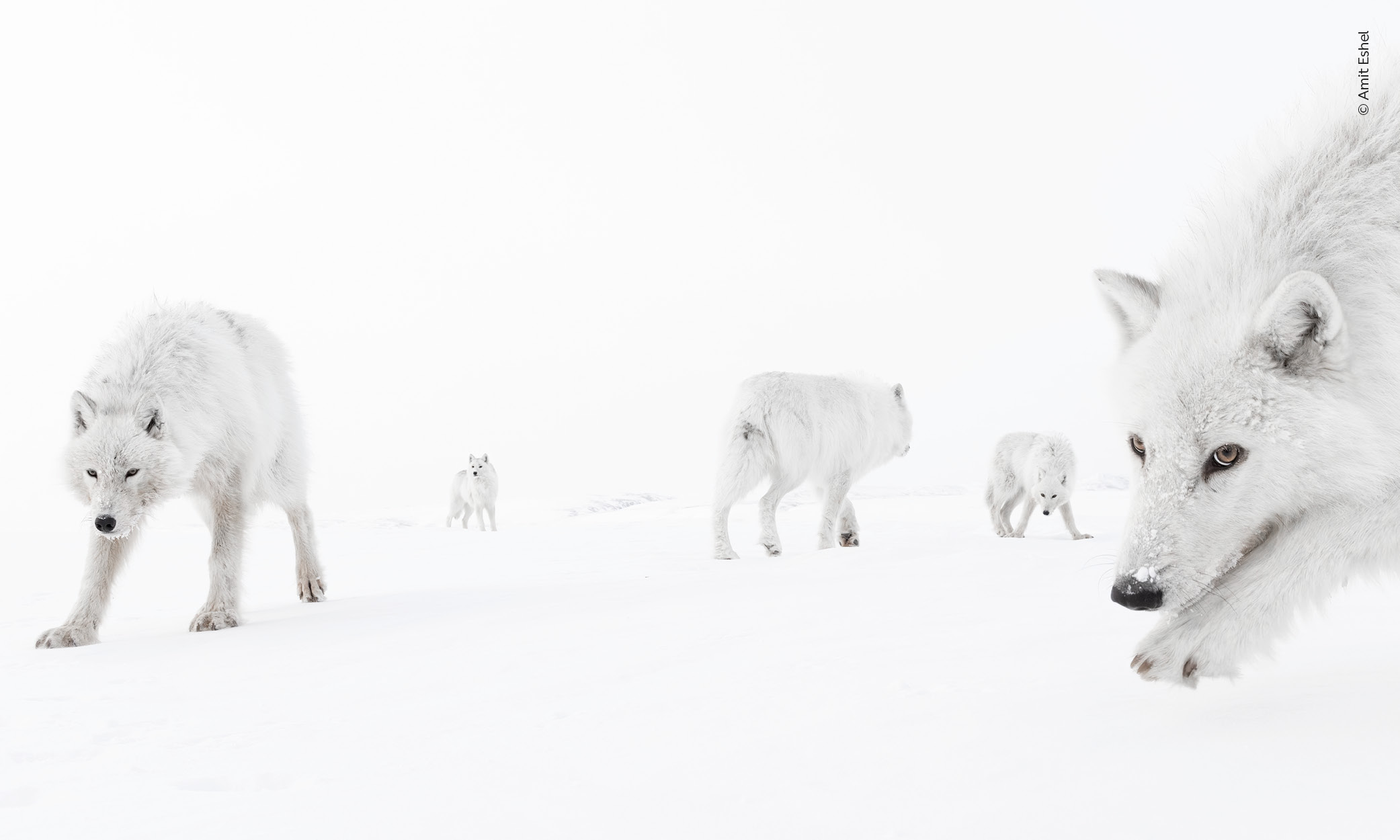
Visit the exhibition
Pause, reflect and reconnect with the natural world through images that celebrate nature’s awe-inspiring beauty and urge us to protect it.
Don't miss a thing
Receive email updates about our news, science, exhibitions, events, products, services and fundraising activities. We may occasionally include third-party content from our corporate partners and other museums. We will not share your personal details with these third parties. You must be over the age of 13. Privacy notice.
Follow us on social media